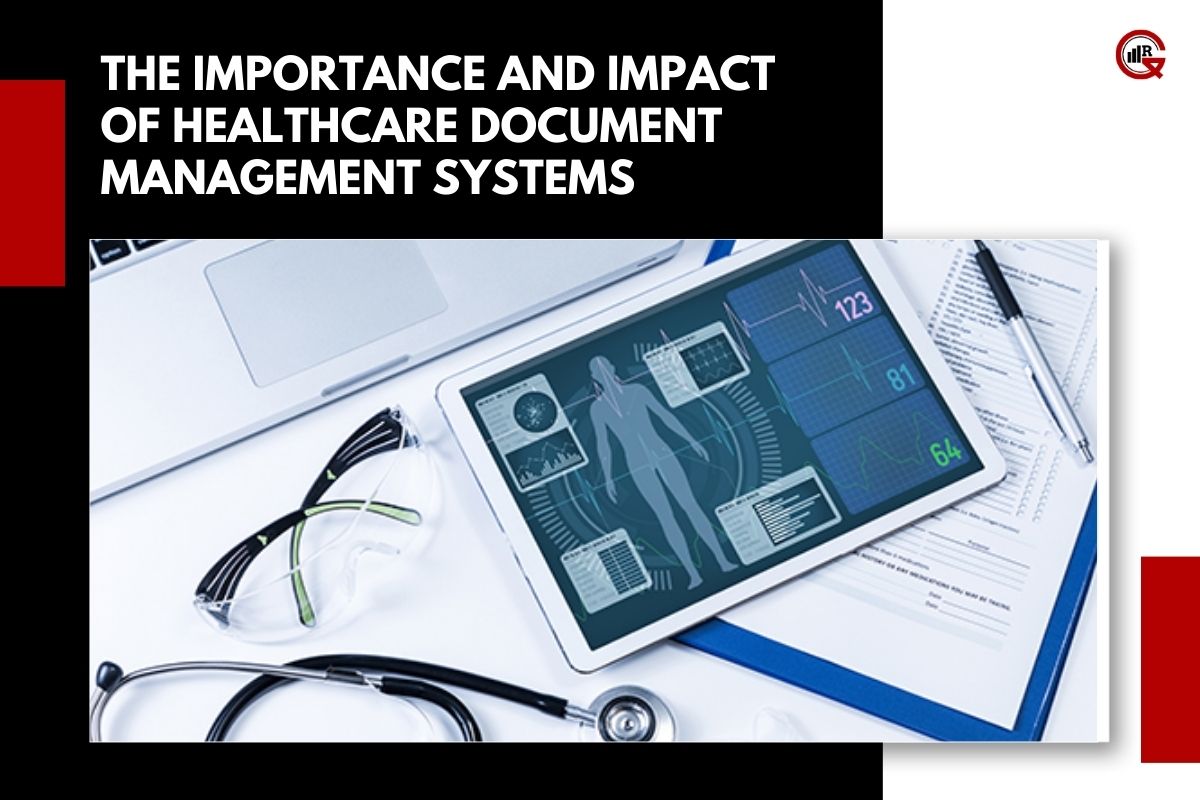(Source – Digital Transformation Solutions)
In the rapidly evolving landscape of healthcare, the efficient management of documents is crucial. With the increasing complexity of patient care, regulatory requirements, and the sheer volume of data generated, healthcare organizations need robust systems to handle their documentation needs. Healthcare Document Management Systems (HDMS) have emerged as essential tools in this context, helping to streamline operations, enhance patient care, and ensure compliance with regulations.
What are Healthcare Document Management Systems?
Healthcare Document Management Systems are specialized software solutions designed to manage, store, and track electronic documents within healthcare organizations. These systems facilitate the digitization of paper records, enabling secure storage, quick retrieval, and efficient sharing of documents. HDMS typically includes features such as document scanning, indexing, storage, workflow automation, and compliance management.
Benefits of Healthcare Document Management Systems
Enhanced Patient Care
One of the most significant benefits of HDMS is the improvement in patient care. By providing healthcare professionals with quick and easy access to patient records, these systems ensure that accurate and up-to-date information is available at the point of care. This can lead to better diagnosis, treatment, and overall patient outcomes. Additionally, HDMS can integrate with Electronic Health Records (EHR) systems, further enhancing the quality of care by ensuring that all relevant patient information is centralized and accessible.
Improved Efficiency
HDMS streamlines the management of documents, reducing the time and effort required to locate and retrieve patient records. This efficiency not only saves time for healthcare providers but also reduces administrative costs. Automated workflows within HDMS can handle routine tasks such as routing documents for approval or notifying staff of required actions, freeing up valuable time for healthcare professionals to focus on patient care.
Enhanced Security and Compliance
Healthcare organizations are subject to stringent regulations regarding the handling of patient information. Healthcare Document Management Systems help ensure compliance with regulations such as the Health Insurance Portability and Accountability Act (HIPAA) by providing secure storage, access controls, and audit trails. These systems also offer encryption and other security measures to protect sensitive data from unauthorized access and breaches.
Cost Savings
The transition from paper-based to digital document management can result in significant cost savings for healthcare organizations. Reducing the need for physical storage space, minimizing the risk of lost or misplaced documents, and decreasing the time spent on manual processes all contribute to lower operational costs. Additionally, Healthcare Document Management Systems can reduce the need for physical supplies such as paper, ink, and filing cabinets.
Disaster Recovery
In the event of a disaster, such as a fire or flood, paper records can be easily destroyed, leading to the loss of critical patient information. HDMS offers robust disaster recovery solutions by ensuring that digital records are backed up and can be restored quickly. This capability ensures the continuity of care and the preservation of important medical data.
Key Features of Healthcare Document Management Systems

Document Scanning and Capture
HDMS allows healthcare organizations to digitize paper records through document scanning and capture. Advanced optical character recognition (OCR) technology can convert scanned documents into searchable text, making it easier to locate specific information within a document.
Indexing and Metadata
Efficient document retrieval requires proper indexing and the use of metadata. HDMS enables healthcare providers to tag documents with relevant keywords, categories, and other metadata, ensuring that records can be quickly and accurately retrieved when needed.
Secure Storage and Access Control
Security is a critical aspect of HDMS. These systems provide secure storage for electronic documents, with access controls to ensure that only authorized personnel can view or modify records. Role-based access, encryption, and multi-factor authentication are common security features in Healthcare Document Management Systems.
Workflow Automation
Workflow automation is a powerful feature of Healthcare Document Management Systems that enhances efficiency. These systems can automate routine tasks, such as routing documents for approval, sending notifications, and tracking the status of documents. Automation reduces manual effort, minimizes errors, and ensures that processes are completed promptly.
Integration with EHR Systems
To maximize the benefits of HDMS, integration with existing Electronic Health Records (EHR) systems is essential. This integration ensures that all patient information is consolidated in a single, easily accessible location, enhancing the quality of care and improving the overall efficiency of healthcare operations.
Compliance Management
HDMS is designed to help healthcare organizations comply with regulatory requirements. These systems provide features such as audit trails, access logs, and reporting capabilities to ensure that organizations can demonstrate compliance with regulations like HIPAA and GDPR.
Challenges in Implementing Healthcare Document Management Systems

High Initial Costs
The implementation of HDMS can involve significant upfront costs, including software acquisition, hardware upgrades, and staff training. These costs can be a barrier for smaller healthcare organizations with limited budgets. However, the long-term benefits and cost savings often justify the initial investment.
Change Management
Transitioning from paper-based to digital document management requires a cultural shift within the organization. Staff may be resistant to change, and adequate training and support are essential to ensure successful adoption. Healthcare organizations must invest in change management strategies to address resistance and promote the benefits of the new system.
Data Migration
Migrating existing paper records to a digital format can be a complex and time-consuming process. Healthcare organizations must plan and execute the data migration carefully to ensure that all records are accurately digitized and properly indexed. This process may require additional resources and expertise.
Integration Challenges
Integrating HDMS with existing EHR systems and other healthcare IT infrastructure can be challenging. Compatibility issues, data silos, and workflow disruptions can arise during the integration process. Healthcare organizations must work closely with vendors to ensure seamless integration and minimize disruptions.
Future Trends in Healthcare Document Management Systems
Cloud-Based Solutions
Cloud-based HDMS are gaining popularity due to their scalability, flexibility, and cost-effectiveness. These solutions enable healthcare organizations to store and access documents securely from any location, facilitating remote work and collaboration. Cloud-based systems also offer enhanced disaster recovery capabilities and reduce the need for on-premises infrastructure.
Artificial Intelligence and Machine Learning

The integration of artificial intelligence (AI) and machine learning (ML) into HDMS is transforming document management in healthcare. AI and ML can automate tasks such as document classification, data extraction, and predictive analytics, improving efficiency and accuracy. These technologies can also enhance security by identifying potential threats and anomalies in real time.
Mobile Access
The increasing use of mobile devices in healthcare is driving the demand for mobile-friendly HDMS. Mobile access enables healthcare providers to retrieve and manage documents on the go, improving responsiveness and patient care. Mobile Healthcare Document Management Systems applications offer features such as secure access, document sharing, and electronic signatures, enhancing the overall functionality of the system.
Blockchain Technology
Blockchain technology is emerging as a potential solution for enhancing the security and integrity of healthcare documents. Blockchain’s decentralized and tamper-proof nature ensures that records are secure and immutable. This technology can be used to create a transparent and auditable trail of document access and modifications, further strengthening compliance and security.
Conclusion
Healthcare Document Management Systems are vital tools for modern healthcare organizations, offering numerous benefits such as improved patient care, enhanced efficiency, and robust security. Despite the challenges associated with implementation, the long-term advantages of HDMS make them a worthwhile investment. As technology continues to evolve, future trends such as cloud-based solutions, AI integration, and blockchain technology will further enhance the capabilities and impact of HDMS. Healthcare organizations must embrace these advancements to stay ahead in an increasingly digital and data-driven world.






